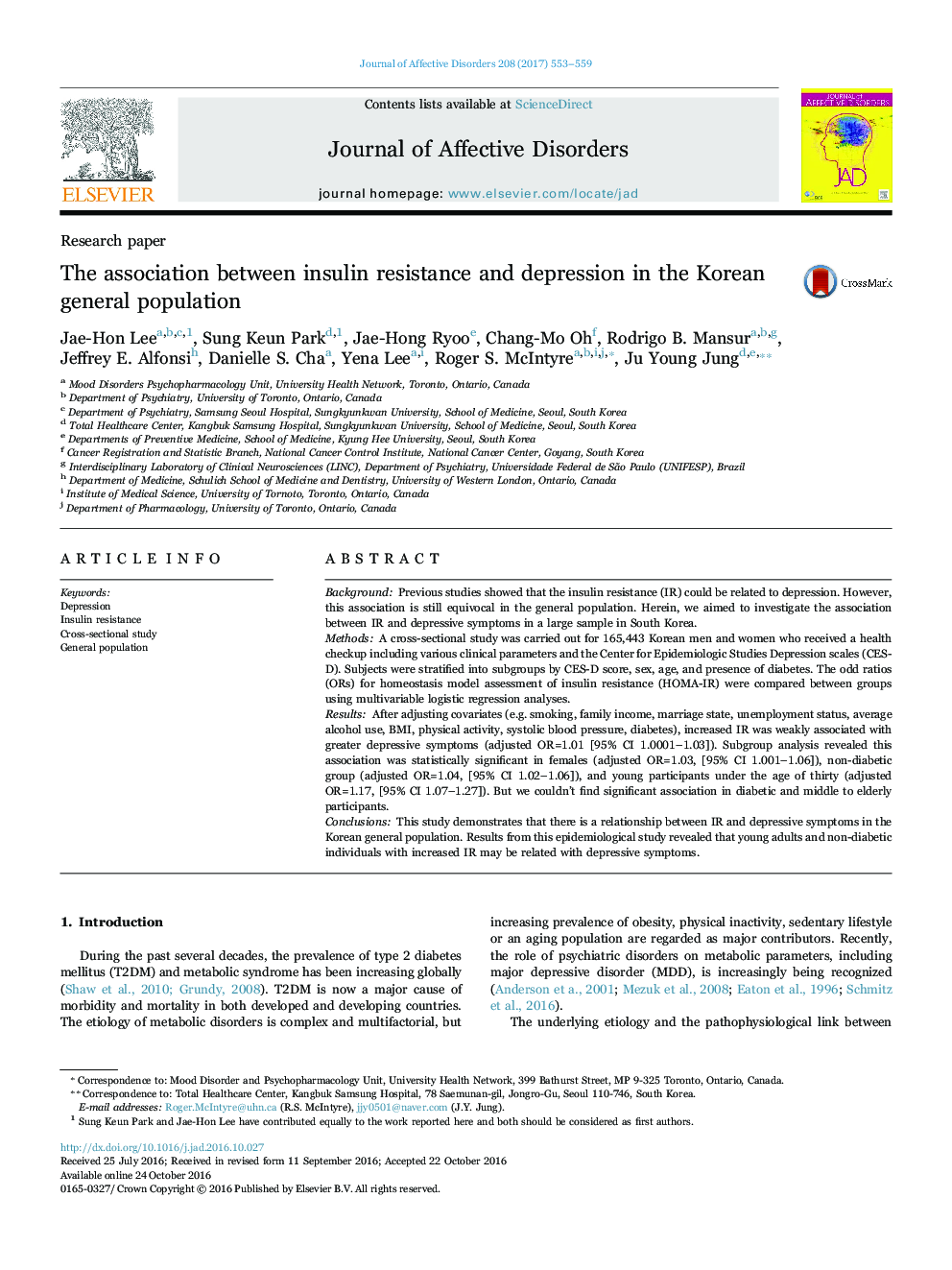| کد مقاله | کد نشریه | سال انتشار | مقاله انگلیسی | نسخه تمام متن |
|---|---|---|---|---|
| 5722126 | 1608117 | 2017 | 7 صفحه PDF | دانلود رایگان |
- Increased insulin resistance was associated with depressive symptoms in the Korean general population (N=165,443).
- The subgroup analysis revealed the association was statistically significant in female, non-diabetic and young groups.
- Increased insulin resistance in non-diabetic participants was more strongly associated with depressive symptoms.
- These findings suggest that early management of insulin resistance may prevent progression toward depressive symptoms.
BackgroundPrevious studies showed that the insulin resistance (IR) could be related to depression. However, this association is still equivocal in the general population. Herein, we aimed to investigate the association between IR and depressive symptoms in a large sample in South Korea.MethodsA cross-sectional study was carried out for 165,443 Korean men and women who received a health checkup including various clinical parameters and the Center for Epidemiologic Studies Depression scales (CES-D). Subjects were stratified into subgroups by CES-D score, sex, age, and presence of diabetes. The odd ratios (ORs) for homeostasis model assessment of insulin resistance (HOMA-IR) were compared between groups using multivariable logistic regression analyses.ResultsAfter adjusting covariates (e.g. smoking, family income, marriage state, unemployment status, average alcohol use, BMI, physical activity, systolic blood pressure, diabetes), increased IR was weakly associated with greater depressive symptoms (adjusted OR=1.01 [95% CI 1.0001-1.03]). Subgroup analysis revealed this association was statistically significant in females (adjusted OR=1.03, [95% CI 1.001-1.06]), non-diabetic group (adjusted OR=1.04, [95% CI 1.02-1.06]), and young participants under the age of thirty (adjusted OR=1.17, [95% CI 1.07-1.27]). But we couldn't find significant association in diabetic and middle to elderly participants.ConclusionsThis study demonstrates that there is a relationship between IR and depressive symptoms in the Korean general population. Results from this epidemiological study revealed that young adults and non-diabetic individuals with increased IR may be related with depressive symptoms.
Journal: Journal of Affective Disorders - Volume 208, 15 January 2017, Pages 553-559
